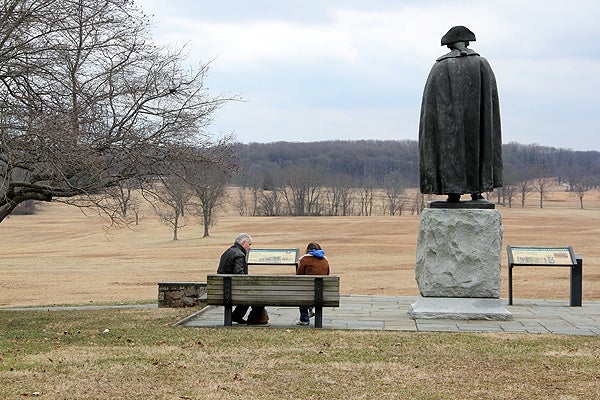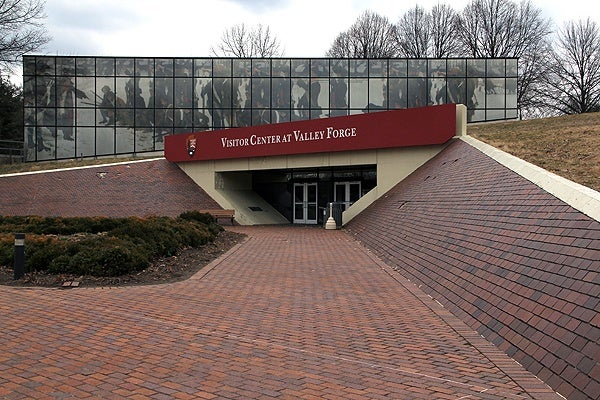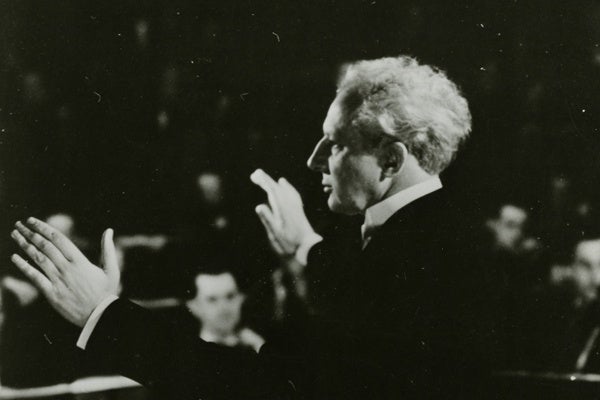‘To the stars’ with Stokowski: Philadelphia Orchestra celebrates enduring legacy
It was the composer Rachmaninov who called the Philadelphia Orchestra “the finest orchestra the world has ever heard.”
At the time, 1929, Leopold Stokowski held the baton, bringing the orchestra into the modern age through experimentation — primarily by programming new music, but also with his radical ideas of how to present it.
“Stokowski was intensely involved with all aspects of the concert experience,” said Jack McCarthy, an archivist hired by the orchestra to dig up artifacts from that era. “Not just the music — he was interested in the design of the hall, the lighting, the decor.
“He did experiments where they would turn off all the lights in the hall; he wanted audiences to just hear the music and not be distracted,” said McCarthy. “They tried it for a while and they gave up with that.”
The lobby of the Kimmel Center now has on display documents and artifacts associated with Stokowski — including the art deco podium he had custom-built to modernize the Academy of Music. McCarthy assembled the materials from the Stokowski papers housed the University of Pennsylvania, the archives of the Athenaeum, and the orchestra’s own holdings.
McCarthy has been rotating artifacts through the Kimmel during the current season, marking the centenary of Stokowski’s appointment as music director. Throughout the season, the orchestra is performing Stokowski-centric concerts programmed with music the maestro either premiered or transcribed.
Recording ‘Fantasia’ soundtrack
Stokowski’s most famous innovation was the soundtrack for “Fantasia,” the animated Disney movie: a bold experiment to harness new recording technology (circa 1940) to disseminate classical music to a giant audience.
Edna Phillips, who died in 2003, was the orchestra’s principal harpist during that project. Her memories of the project were captured in a biography, published postumously, called “One Woman in a Hundred: Edna Phillips and the Philadelphia Orchestra.”
Her biographer, Mary Sue Welsh, recorded many interviews with the harpist. In one of them, she told of her challenges during the “Fantasia” recording.
“They suddenly discovered that my harp was scratching my knees. When I moved the harp back to play, it rubbed against the wool of my skirt and got picked up on the sound,” said Phillips. “So what do you think they did? They banished me to the pit, a hundred miles, it seemed, from the orchestra itself.”
Stokowski had hired Phillips as principal harpist in 1930, making her not only the first woman musician in the Philadelphia Orchestra, but the first woman musician in any major orchestra.
Welsh recorded many interviews with Phillips to write her memoir, which, posthumously, became the biography
“When she had to play the ‘Firebird,’ she was terrified,” said Welsh, former director of the Bach Festival of Philadelphia, where she befriended Phillips. “It was so dissonant, and she had never heard it. There were no recordings. It was very hard to play the new music.”
In addition to keeping her musicianship at a very high level, Phillips also had to struggle with the attention from the press and from Stokowski himself, who would sometimes make advances. As an attractive woman on a stage full of men, she stood out more than she liked.
“Publicity broke out like a rash,” said Welsh. “Stokowski put her right in the front of the stage.”
A once in a lifetime experience
Stokowski was known to drive his musicians hard, rehearsing difficult passages in great depth and leaving the rest of the score for the musicians to figure out on their own. All the while, Welsh said Phillips and the other musicians knew that Stokowski was a once in lifetime experience.
“They thought he made the greatest music,” said Welsh. “For example, her very good friend Marcel Tabuteau, the principal oboist … he played under Toscanini and then Stokowski. He said, ‘When I play a Toscanini concert, I know it’s going to be perfect. I know it’s going to be perfect when I going to the concert that night, and we play it and it is perfect.
“With Stokowski, the concerts are wonderfully prepared, beautiful, lovely, everything, but every now and then a brushfire goes through the orchestra, and the music goes to the stars.”
Last weekend the Orchestra performed “Rite of Spring,” a work given its American premiere by Stokowski in 1922, with multi-media theatrical elements by New York City’s Ridge Theater. This weekend it will again perform “Rite,” without the visual accompaniment, along with other pieces Stokowski premiered or transcribed.
WHYY is your source for fact-based, in-depth journalism and information. As a nonprofit organization, we rely on financial support from readers like you. Please give today.















